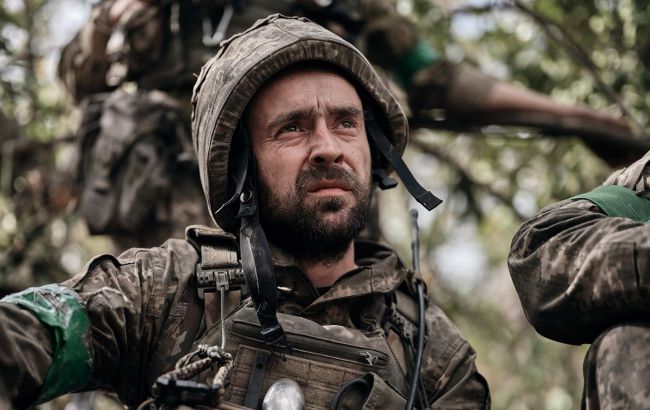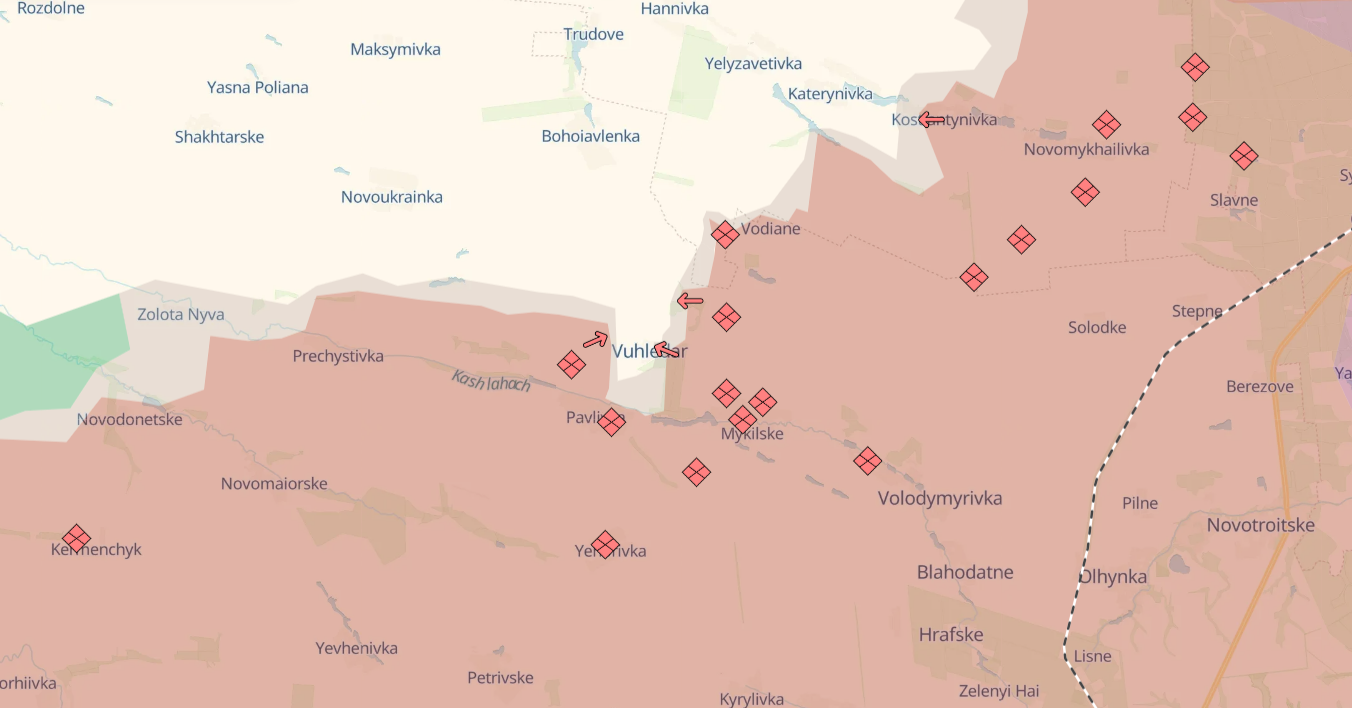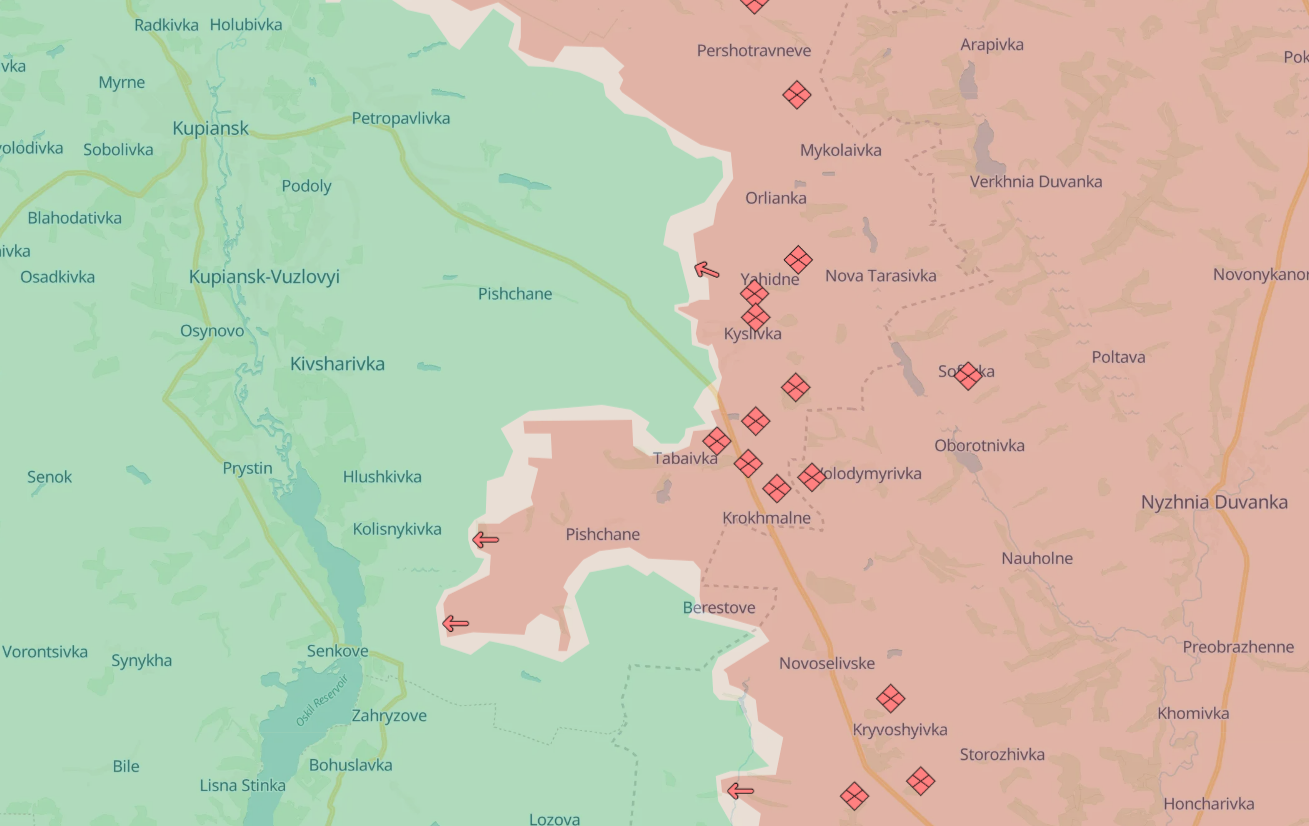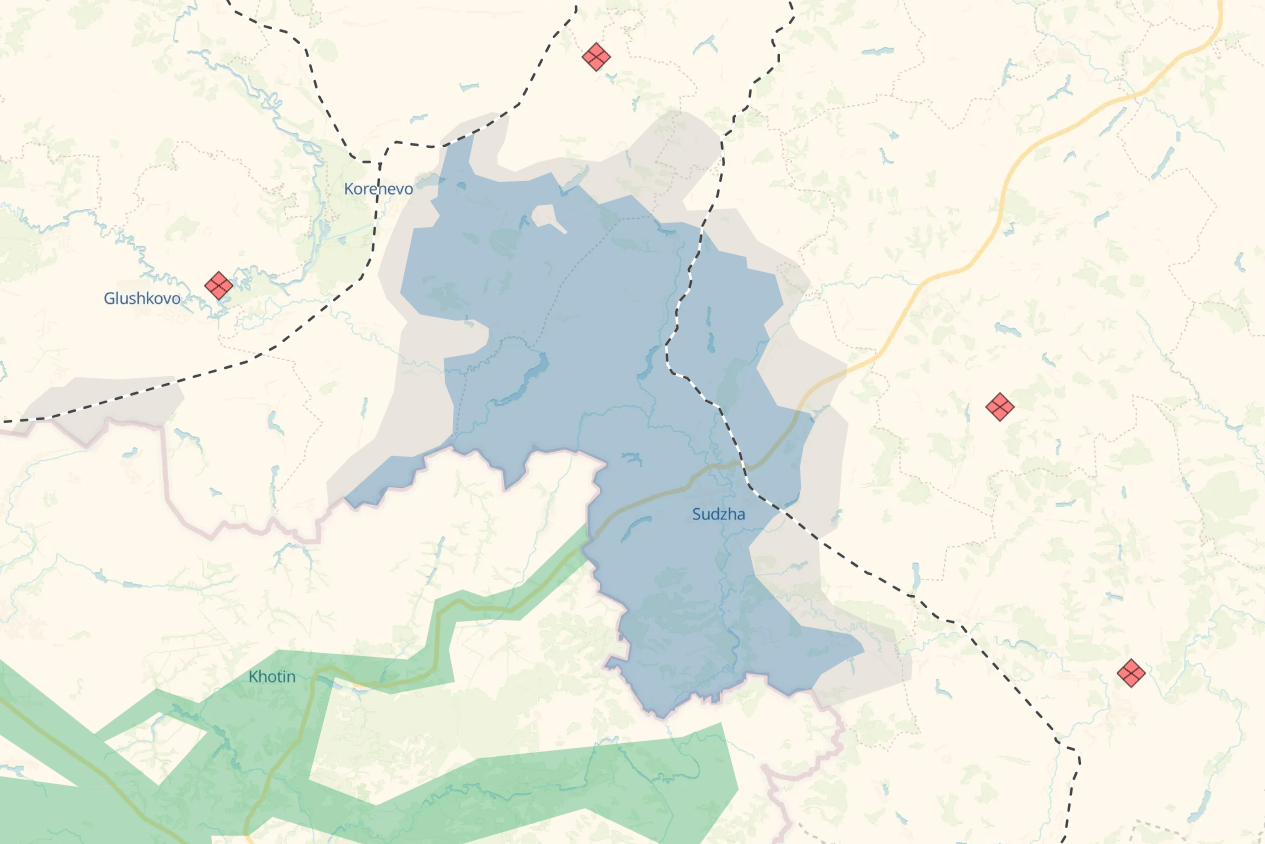Vuhledar and Pokrovsk under onslaught and Russia's goals before the cold: Frontline overview
 Ukrainian troops try to hold back the Russian offensive in the East (photo by Getty Images)
Ukrainian troops try to hold back the Russian offensive in the East (photo by Getty Images)
The situation at the front remains difficult. While fierce fighting continues in the Kursk region, in the east of Ukraine, Russian troops are approaching Pokrovsk, have almost surrounded Vuhledar, and are trying to break through to the Oskil River south of Kupiansk. RBC-Ukraine's report on what is happening at the front, Russia's goals, and how events will develop in the coming weeks.
Contents
- Vuhledar almost surrounded: Risks of possible loss
- To Pokrovsk through Selydove: Russia's plan
- Russia making its way to Oskil River: Possible targets
- Operation in Kursk region: What is happening and what to expect next
Vuhledar almost surrounded: Risks of possible loss
Vuhledar, southwest of occupied Donetsk, has long remained an impregnable fortress for the Russian occupiers. The fortified area was a convenient position for observing the movement of Russian troops, and adjusting fire, and could have become a springboard for a Ukrainian offensive toward Mariupol.
The Russians tried to attack Vuhledar with large forces in early 2023. However, two Russian marine brigades suffered heavy losses and were pushed back from the outskirts. Since then, no large-scale assault attempts were made until August 2024.
At the end of the summer, Russian troops made progress on the flanks. They came close from the east, capturing the village of Vodiane and several heights; from the west, he took control of Prechystivka. According to DeepState maps, the city is squeezed in a pincer, about two kilometers between the flanks.
The last road connecting the garrison to the unoccupied Ukrainian territory passes through this narrow gap. Russian media are already saying that the Ukrainian defenders of Vuhledar are under a complete blockade. The Center for Countering Disinformation at the National Security and Defense Council denies this.
 Vuhledar is almost surrounded, and the Ukrainian garrison may be forced to leave the city (photo by deepstatemap.live)
Vuhledar is almost surrounded, and the Ukrainian garrison may be forced to leave the city (photo by deepstatemap.live)
However, the pressure is increasing. According to DeepState, Russia has entered the eastern part of the town and is trying to gain a foothold in the high-rise buildings. Russian troops are also pressing from the right flank but have not yet reached the city. They have sent regular forces and special units to capture it. Simultaneously with the infantry assaults, Vuhledar is being destroyed by constant Russian shelling.
Approximately one-fifth of it is in the gray zone. And many consider the loss of Vuhledar to be a matter of a few weeks at most. According to Oleksandr Kovalenko, a military and political observer at the Information Resistance group, the likelihood that the Ukrainian Armed Forces will have to leave it is high.
“The situation there is so complicated that the prospect of holding the line is becoming increasingly illusory daily,” he says.
From the perspective of the defense lines, the possible loss of Vuhledar is not critical. The main zone of fortifications is to the north, in the area of Novoukrainka and Bohoiavlenka, the expert says.
“But the city played another important role. It allowed us to keep the railroad through Volnovakha from Donetsk to Zaporizhzhia region under fire control. And if this control is not maintained, the Russians will soon be able to launch trains. The logistics support of the Russian Dnepr and Vostok groups will begin. And this is the main problem of losing Vuhledar - Russia's logistics will be significantly expanded,” Kovalenko emphasizes.
The presence of the only road to the territory controlled by Ukraine further aggravates the situation. Russia has not cut it but has firepower. Now it is a risky route both to supply the garrison and in case of its withdrawal.
Last week, there were rumors that the 72nd Separate Mechanized Brigade named after the Black Zaporozhians of the Armed Forces of Ukraine had allegedly begun a tactical withdrawal. However, the soldiers posted a video in which they stated that despite constant Russian attacks, they remained in place and retained control of Vuhledar.
To Pokrovsk through Selydove: Russia's plan
Selydove is called the gateway to Pokrovsk, a major military and logistics hub near the border with the Dnipropetrovsk region. The situation there is becoming increasingly threatening. The Russian occupiers are advancing several hundred meters a day, flanking Selydove.
Over the past month, Russia has occupied Novohrodivka from the north and Ukrainka a few kilometers to the south. It is possible that they could become a springboard for an assault on Selydove itself or to continue the encirclement of the city.
In their latest report, analysts from the Institute for the Study of War (ISW) documented advances near the railroad line south of Selydove and in the surrounding villages. The Russian occupiers are trying to enter the city from the side of occupied Mykhailivka.
 The Russians are approaching Selydove from the flanks to go to Pokrovsk from the south (photo deepstatemap.live)
The Russians are approaching Selydove from the flanks to go to Pokrovsk from the south (photo deepstatemap.live)
While all these attempts remain unsuccessful, Ukrainian forces are destroying Russian manpower and equipment outside the city, says Vitalii Milovydov, spokesperson for the 15th Qaradağ National Guard Brigade. According to him, Russia is using night attacks, acting in small groups of infantry, and shelling the city with all types of weapons. Armored vehicles are not being used after Qaradağ repelled several similar attempts.
“Russia's further tactics are known, they will simply use a fire barrage, heavy artillery, multiple rocket launchers, and anti-aircraft guns and try to conduct assault operations on the ashes,” he says, adding that Selydove is fully under the control of the Ukrainian Defense Forces and the Russians are not there.
Despite the same attempts to surround the town, the situation there is different from Vuhledar, says Kovalenko.
“I would not make a full comparison, if only because there are three logistics arteries west of Selydove that allow both to supply the garrison and to withdraw it in case of a critical situation,” he explains.
The main Russian goal is to get the opportunity to attack Pokrovsk from the south. Of course, provided they manage to capture Selydove.
“The fact is that in its offensive on Pokrovsk, it has 2 scenarios for how to enter the city - from the east or the south. But if we are talking about the southern direction, then Selydove is a huge problem for the Russian occupation forces. I think they will seek to occupy it. If not, the offensive campaign on Pokrovsk will be very risky for them,” the source says.
It is difficult to predict what will happen to Selydove soon. Since the fighting in the town itself could last for months, the Russians will continue to try to surround it.
“It all depends on how much they are still able to carry out such offensive actions. And to what extent we will be able to fight back. So far, unfortunately, the tactical initiative is on their side. It is quite possible that they can come close to Selydove or capture some other settlements,” says expert, Major of the Armed Forces of Ukraine Oleksii Hetman.
Russia making its way to Oskil River: Possible targets
The Ukrainian bridgehead on the eastern bank of the Oskil River, created during the counteroffensive in the Kharkiv region in 2022, has long been one of the most stable areas. It stretches from Kupiansk to Sviatohirsk for about 100 km and is 20-30 meters wide.
For two years, the Russians tried to break through and reach the river. But it seems that in the summer of 2024, they found a weak spot. In mid-June, they attacked the village of Pishchane, west of the previously occupied Krokhmalne and Tabaivka. Since then, they have been trying to move slowly toward Oskil. It is at this point that up to three kilometers remain to the river.
According to Volodymyr Fokin, a representative of the 3rd Separate Assault Brigade of the Ukrainian Armed Forces, the situation here is difficult and sometimes uncontrollable. The Russian occupiers have changed their tactics and are advancing with large forces, not just infantry.
 Russians are getting closer to the Oskil River and are trying to cut the Khortytsia group south of Kupiansk (photo by deepstatemap.live)
Russians are getting closer to the Oskil River and are trying to cut the Khortytsia group south of Kupiansk (photo by deepstatemap.live)
To cover the three kilometers, last week the Russians went into battle with several dozen armored vehicles. But they suffered heavy losses. On Thursday, the 92nd Mechanized Brigade of the Ukrainian Armed Forces reportedly destroyed 3 tanks and five armored personnel carriers, and the 77th Airmobile Brigade posted a video of burning vehicles, including turtle tanks - tanks that have been reinforced with armor.
According to Forbes, Russia lost at least a fifth of its equipment in this attack, which slowed down its advance toward Oskil. According to the agency, he is most likely trying to cut the Khortytsia operational and strategic grouping in half. And if he succeeds, he will not only be able to disrupt the logistics of the Ukrainian Armed Forces, but also get the opportunity to attack Kupiansk from the south along the river. Which is a key hub in the Kharkiv region.
There is indeed a threat of reaching the shore of Oskil, although all attempts are broken up due to significant losses. This is because Russians never count losses, says Oleksandr Kovalenko.
“We can cut off their advance with the same success. Now they have moved their advanced units towards the river, but we can cut out this appendix through Berestove or Tabaivka. I do not understand why this is not being done. Perhaps we lack resources or have some other plan,” he says in an interview with RBC-Ukraine.
According to him, Russia is in an awkward position in the Pishchane area. And the fact that he is still there is probably due to the equally uncomfortable position of the Ukrainian Armed Forces. Which can currently afford only defense.
Operation in Kursk region: What is happening and what to expect next
Regarding the Kursk region, it is safe to say that Vladimir Putin's plan to knock out the Ukrainian Defense Forces by October 1 has failed. “The 1st of October is today. I very much doubt that the Russians will have time to fulfill the order,” Hetman says ironically.
According to Bild, the Russian command was planning a major offensive, but it was delayed, in part, because the FSB could not establish coordination with the military. Therefore, the prospect of occupying the entire region even by the middle of the month seems illusory.
 The Armed Forces of Ukraine's operation in the Kursk region continues, with maneuver combat operations underway (photo by deepstatemap.live)
The Armed Forces of Ukraine's operation in the Kursk region continues, with maneuver combat operations underway (photo by deepstatemap.live)
As of today, the Ukrainian army remains in control of most of the Sudzha district (including Sudzha), the central part of the Korenevo district, and several square kilometers in the west of the Glushkovo district.
At the same time, attempts to reach the village of Glushkovo and the Seim River continue. Fighting has been going on for more than two weeks in the area of Veseloe village, where another breakthrough was recently made. According to OSINT projects, the Ukrainian Armed Forces could have bypassed the village and approached Glushkovo closer than is shown on the maps.
Although there have been no confirmed changes in the monitoring maps in recent days, there is no reason to talk about the stabilization of the contact line in the Kursk region.
“It cannot stabilize, because there is no such front as in our east, where we are fighting positional defensive battles. The situation in Kursk is completely different,” explains Hetman.
In particular, Ukrainian troops are constantly on the move, and with a small number of their forces, they are forced to hold off a large number of Russian forces that Moscow cannot use in Ukraine.
“Therefore, by and large, the entire Kursk region, at least up to the Seim River, can be considered a gray zone. Because it is not known how many Ukrainian troops are there. There are maneuvering operations going on there, and it can be very loosely compared to a guerrilla war. I think that this situation will continue, and we will expand our zone of influence,” the expert adds.
Recently, it became known that the Russians may intensify their activities in another area. According to Vladyslav Voloshyn, the head of the Southern Defense Forces of Ukraine, Russia is massing personnel and preparing for assaults in the Zaporizhzhia sector.
“They may move forward, but in separate locations. In the area of the Robotyne ledge, at the Huliaipole or Vremivka directions. But there will not be any large-scale offensive, for example, to capture Zaporizhzhia,” Kovalenko says.
Russians are currently advancing along the entire frontline in Ukraine. Because they realize that once the weather conditions change, it will be difficult to advance.
In addition, the resources for the 2024 campaign are running out. And it's not so much about people, equipment, and weapons, but about the preparatory resource in general - from plans for troop interaction to logistics, etc. “This does not mean that the Russian occupiers will not be able to advance further. But, likely, there will soon be an operational pause to prepare offensive operations for the next year,” adds Oleksii Hetman.
Sources: General Staff of the Armed Forces of Ukraine, maps and analytics of the DeepState project, reports of the Institute for the Study of War (ISW), Forbes and Bild, experts Oleksandr Kovalenko and Oleksii Hetman.

